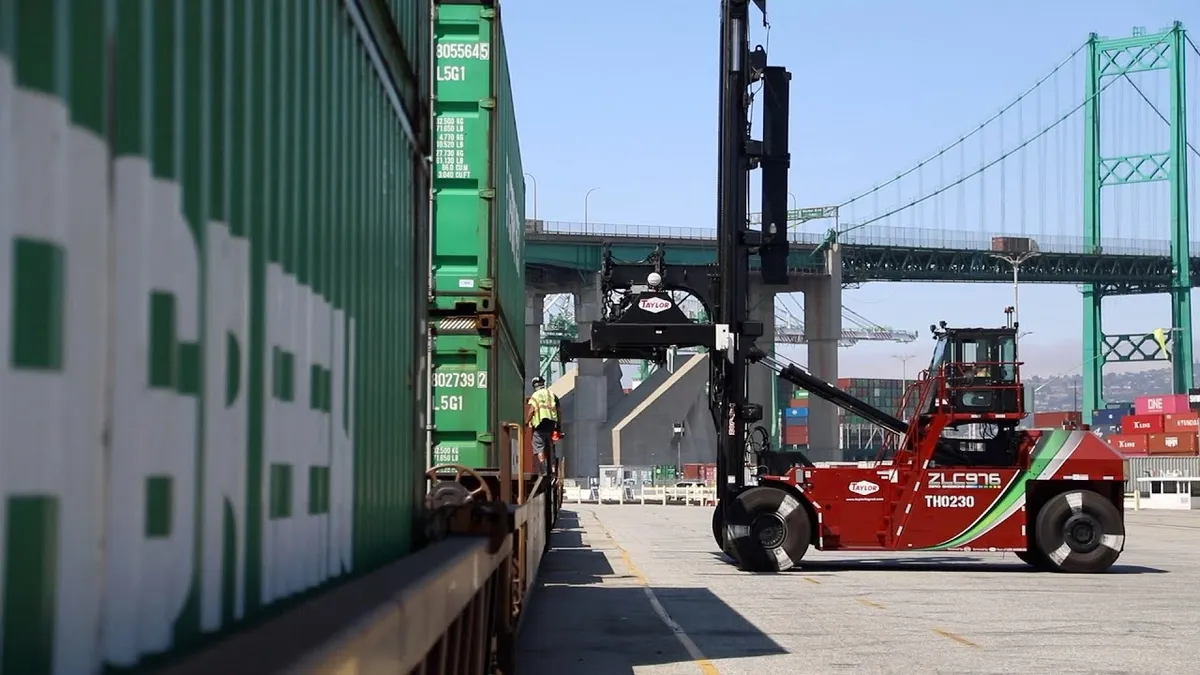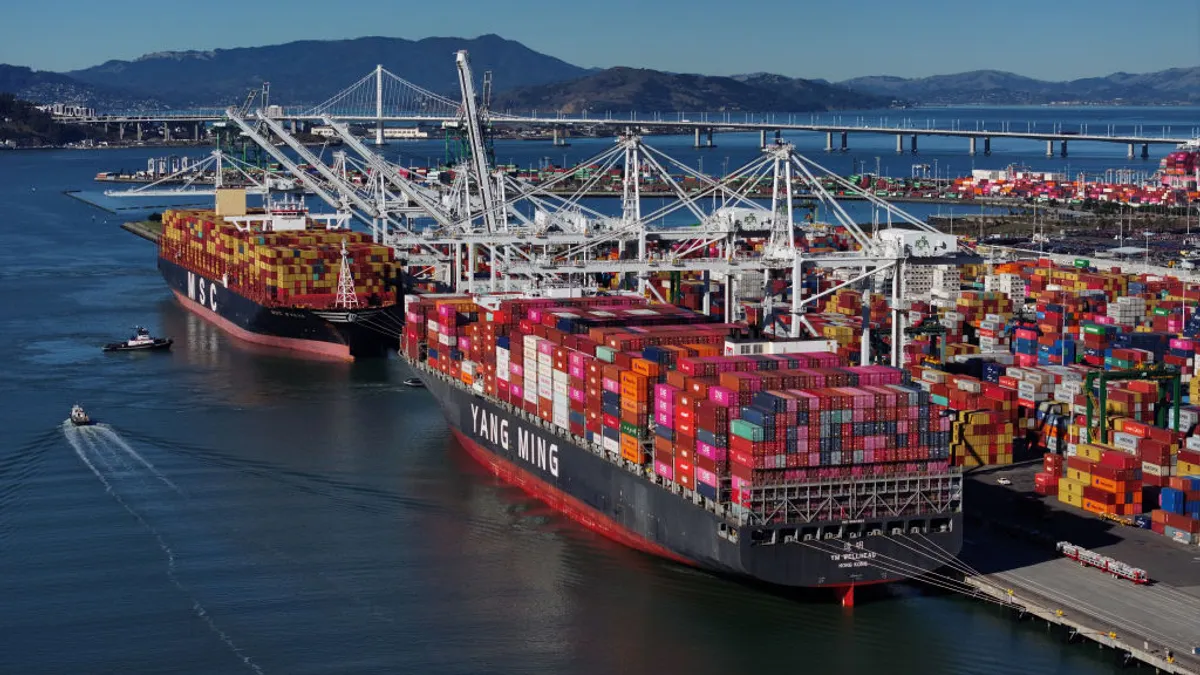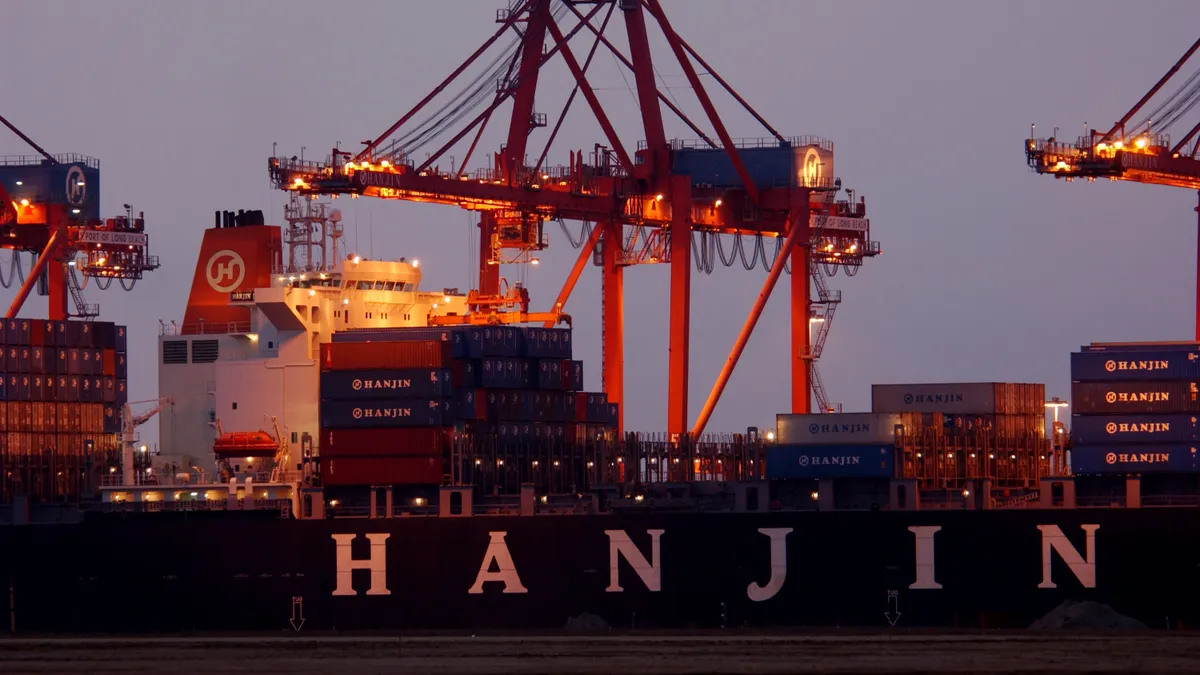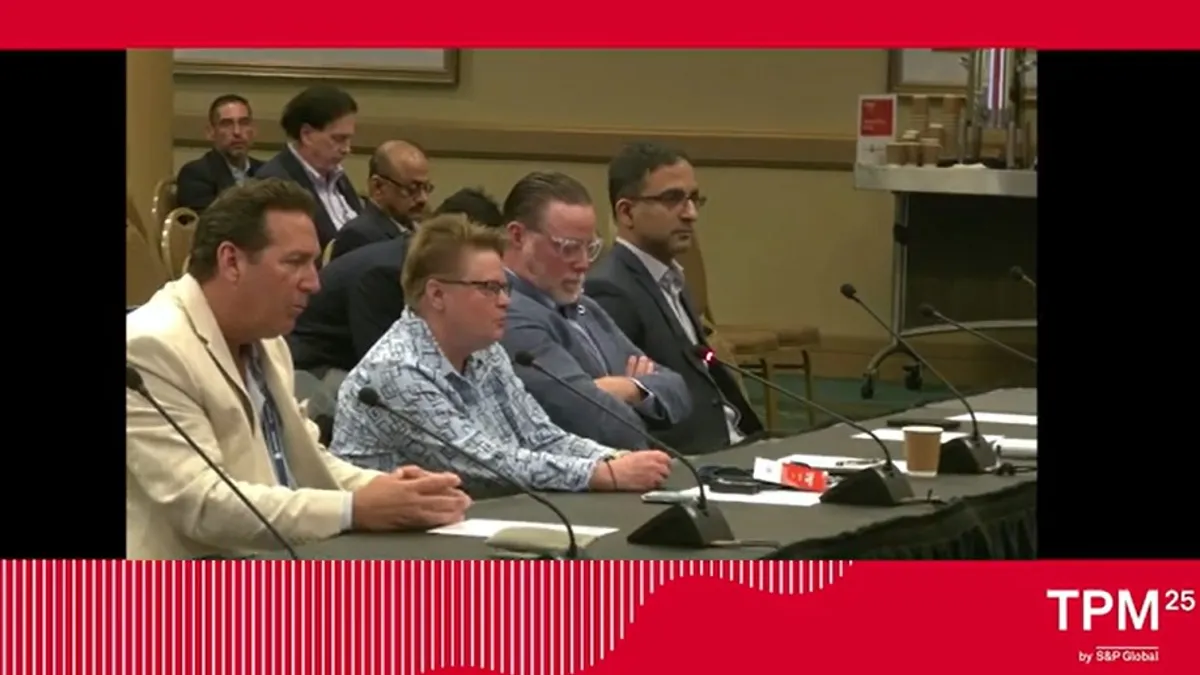The Environmental Protection Agency will award a combined $3 billion to 55 ports through its Clean Ports Program, according to an Oct. 29 press release.
Several ports have outlined their plans to achieve zero-emissions operations over the next few years, and the EPA funding will support those efforts.
“This transformative investment will be a tremendous boost to our efforts to meet our ambitious zero emission goals, improve regional air quality, and combat climate change, while accelerating the port-industry’s transition to zero emissions across the country,” Port of Los Angeles Executive Director Gene Seroka said in a statement.
Twenty-one of the selected ports plan to use the proceeds to upgrade cargo handling equipment, according to the EPA, with funds also being allocated for infrastructure and climate and air quality improvement projects.
More specifically, the funds will support the purchase of zero-emission equipment, including 1,500 units of cargo handling machinery, 1,000 drayage trucks, 20 vessels and 10 locomotives, according to the press release. The funding will also finance shore power systems, battery-electric and hydrogen vehicle charging and fueling infrastructure, and solar power generation.
Here are some of the specific projects the grants will support.
Port of Virginia — $380 million
The Port of Virginia — which aims to reach net-zero emissions by 2040 — is set to receive $380 million, which it will use to buy and install electric assets while retiring legacy equipment powered by engines that burn gasoline or diesel fuel, the port said in an Oct. 29 press release.
The equipment to be replaced includes:
- Specialized cranes for rail operations and container yards
- Forklifts
- Shuttle carriers for moving containers
- Electric locomotives
- On-terminal trucks and shuttle buses for transporting people to and from work areas
Additionally, the port will use some of the grant to develop battery charging infrastructure and energy storage to expand zero-emissions operations at Norfolk International Terminals and Richmond Marine Terminal.
Port of Baltimore — $147 million
The Port of Baltimore will receive $147 million from the EPA’s Clean Ports Program as it pushes to reach net-zero emissions by 2045. The funding will allow the Maryland Port Administration to purchase 213 pieces of zero-emissions vehicles and charging infrastructure, according to an Oct. 29 press release.
The funding is also expected to pay for capacity upgrades to the port’s electrical grid to reduce greenhouse gas emissions by an estimated 35% based on carbon dioxide equivalency compared to 2020 levels.
Port of Philadelphia — $80 million
The Port of Philadelphia was awarded $80 million to replace older, diesel-powered equipment with advanced zero-emission alternatives, according to an Oct. 29 press release.
The zero-emissions equipment will include:
- Electric ship-to-shore cranes
- Yard tractors
- Forklifts
- Charging infrastructure
The grant also will provide for a new electric rail switcher to replace the port’s existing diesel model.
“This initiative is in line with the newly unveiled PhilaPort Strategic Plan – Destination 2040, a roadmap for the port’s development over the next 15 years, which emphasizes a strong commitment to environmental sustainability,” according to the release.
Port of Los Angeles — $412 million
The Port of Los Angeles will mainly use its $412 million grant from the Clean Ports Program to purchase 425 pieces of battery electric and human-operated zero-emission cargo handling equipment, according to an Oct. 29 press release.
“These heavy-duty vehicles stay on port property and current models burn diesel and produce a significant volume of harmful pollutants in addition to greenhouse gasses,” Jacob Goldberg, marine environmental supervisor at the Port of Los Angeles, said in an email.
The new grant funding will support the acquisition of zero-emission, battery-electric cargo-handling equipment such as:
- 337 yard tractors
- Over 300 chargers
- 250 drayage trucks
- 56 top handlers
- 24 heavy-duty forklifts
- 10 battery electric storage systems
- Two solar arrays
- An auto terminal vessel shore power AMP connection
“Human operated, zero-emission cargo-handling equipment is the gold standard for maritime port operations not only because it protects good jobs while cleaning the air, but is also the most efficient and cost-effective in terms of port operations, while additionally providing the necessary safeguards against cyber threats to our national security,” Gary Herrera, president of the International Longshore and Warehouse Union Local 13, said in the port’s release.
Port of Oakland — $322 million
The Port of Oakland will receive $322 million from the Clean Ports Program to purchase approximately 760 pieces of zero-emissions equipment, including:
- 482 drayage trucks
- 179 yard tractors
- 59 forklifts
- 33 front loaders
- Five reach stackers
- One rail car mover
The port plans to partner with three local organizations for skills and safety training and distribution and logistics training for operating the equipment and vehicles, according to the Port of Oakland.
The port’s project will also include the design and management of a four-year Truck Loaner Program. The initiative will provide access to zero emission trucks to independent owner operators and small fleets operating in disadvantaged communities with no cost to the trucker, according to an Oct. 29 press release.
The port is targeting a 50% reduction of carbon emissions by 2030.
Port of Vancouver USA — $22 million
The Port of Vancouver USA will receive $23 million to progress its Climate Action Plan of achieving carbon-neutral operations by 2050 through the use of zero-emission cargo handling equipment.
“The port currently utilizes two mobile harbor cranes to handle steel, aluminum and project cargo that includes win blades nearing 80 meters and other wind energy components,” Port of Vancouver USA Director of Communications Casey Bowman told Supply Chain Dive in an email.
The grant will also help the port purchase two zero-emission electric Liebherr mobile harbor cranes that will offer increased lift capacity and expand the port’s cargo handling capabilities. The use of the cranes will allow the port to emit equivalent emissions of 62.5 gasoline-powered passenger vehicles driven for one year.
In addition, the port plans to use the grant to install infrastructure capable of powering the new zero-emissions cranes through the use of electric cables and batteries, Bowman said.






















